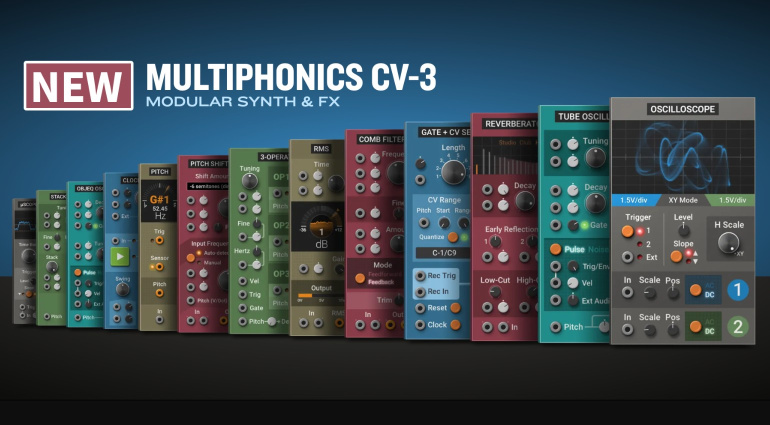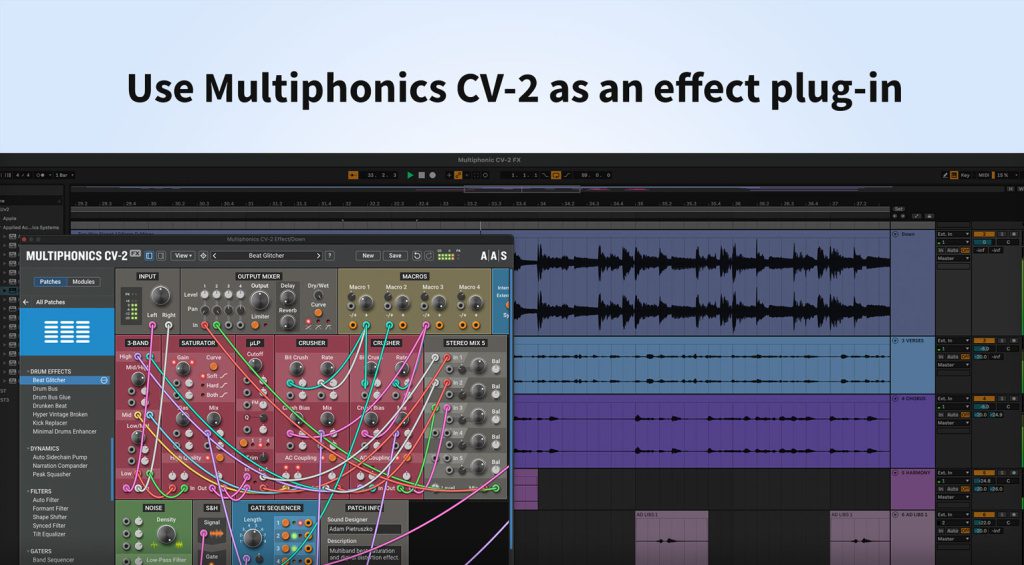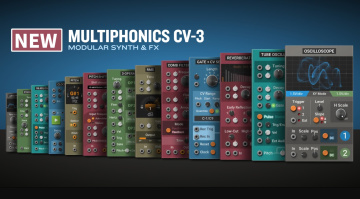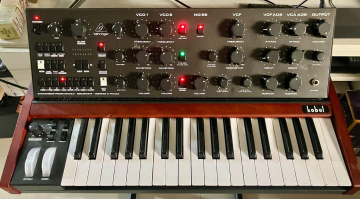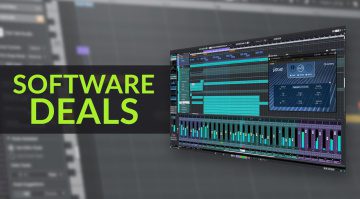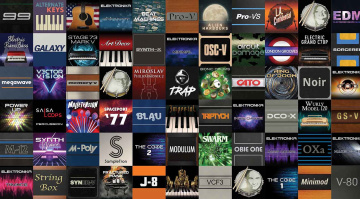AAS Multiphonics CV-3: Polyphonic Modular Sound with MPE and More!
The Plugin Format Modular System
[19 February 2025] AAS has released a new version of its modular synthesizer plugin, Multiphonics CV-3, which offers numerous new features and sonic possibilities. Unlike classic Eurorack emulations, the plugin is based on an independent concept that has now been expanded to include physical modeling, FM synthesis and full polyphony. This brings Multiphonics CV-3 closer to the legendary Tassman 4 synthesizer and opens up new creative possibilities for sound designers and producers.
All About AAS Multiphonics CV-3
AAS Multiphonics CV-3: Modular Synthesizer with Polyphony and New FM Synthesis
One of the most important new features is the support of polyphony. While in previous versions only complex monophonic patches were possible, it is now possible to create polyphonic sounds. Thanks to MPE support, polyphonic sounds can also be played expressively. This enhancement makes the plug-in an even more flexible sound source suitable for a wide range of musical applications, from atmospheric pads to dynamic lead sounds.
There are also major innovations in the modules. With a triple FM oscillator with four algorithms and two physically modeled sound sources called Objeq and Tube, AAS brings new sonic dimensions to the plugin. The Objeq engine is based on the popular Chromaphone synthesizer and produces realistically resonating acoustic objects. The Tube oscillator simulates the behavior of a cylindrical tube with an integrated excitation system. A new VCO with tuned sawtooth waves and additional filters, modulators and effects complete the picture.
Now with MPE, Comb Filter, Tube Oscillator and Reverb Module
The new filter modules are especially interesting. In addition to an advanced comb filter that provides even more realistic physical modeling, there is a special tube filter that simulates the acoustic properties of an open or closed tube. A flexible ADSR envelope generator with adjustable characteristics and a special envelope generator for percussive sounds expand the modulation possibilities. A patchable reverb processor and an integrated oscilloscope for better signal visualization complete the update.
With over 100 new presets for synthesizer and effect sounds, AAS shows what is possible with the new engine. The combination of polyphony, FM and physical modeling, and advanced modulation options makes Multiphonics CV-3 one of the most exciting modular softsynths on the market. Owners of a CV-2 license who register after November 15, 2024 will receive the upgrade free of charge.
New customers will pay $117.00 / £114.00 / 135.00€ for the basic version as part of the introductory offer here at Thomann* or $185.00 for the extended version with additional sound packs on the manufacturer’s website until March 30, 2025.

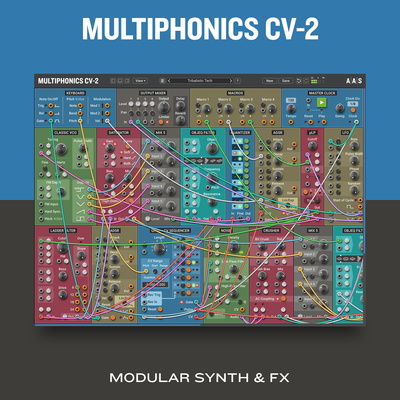
Applied Acoustics Multiphonics CV-2: More Modules and Effects
[05 April 2023] Applied Acoustics modular environment, Multiphonics CV-2, has expanded with many more modules and can now run as an effects plugin. Let’s check out what the new version has to offer.
Multiphonics CV-2
The original CV-1 version came out a couple of years and looked quite promising. It wasn’t trying to mimic the look of VCV Rack or be as comprehensive as some of the other software modulars; it was neat, self-contained and different. The difference was that it contained Applied Acoustics physical modelling technology, giving it a unique vibe.
With Multiphonics CV-2, they’ve kept all that originality and expanded it into some interesting places. First of all, there’s some housekeeping with a new scalable interface, improved browser and the introduction of stereo audio signals. Secondly, we get a bunch of new modules that tap into more traditional modular utilities, effects and filters. The new effects and stereo flow give rise to the new ability to run as an Effect plugin. And finally, there have been some adjustments to how you patch things, which should make it faster to use. If you run out of ideas, there are 150 new patches to play with.
Multiphonics CV-2 is modular, so you can build your own synthesizers, rework sequences, design multiple layers of effects processing and patch it all back into itself. It does look complicated, but Applied Acoustic has built-in a system of documentation that helps unlock the concepts for you. There are pros and cons to having a single style of interface. It’s often in the uniqueness of a front panel that we discover how a module works, but they all look the same here. The advantage is that once you understand the ins and outs of one module you can apply that to all of them.
Modular Contained
What I like about it is actually how contained it is. You’re not overwhelmed with modules or paralysed with option anxiety. You have a few oscillator choices, a few filters, modulators and utilities and so you can explore modular patching without getting lost. The flip side is that it’s not as comprehensive or infinitely complex.
It’s currently on an introductory offer of $99 or £79 for macOS or Windows, and you can get it direct from Thomann via our affiliate link. There’s also a fully functional 15-day trial available for free.


Multiphonics CV-1: A Promising New Eurorack-Style Modular Plugin by AAS
[27 April 2021] Applied Acoustics is having a go at modular with Multiphonics CV-1, incorporating acoustic modelling technology with a clean and versatile approach.
Multiphonics CV-1
Kicking off with 35 modules Multiphonics CV-1 covers a lot more than just the basics. While the synthesizer building blocks are present in the VCO, VCA, envelopes and filters there are a lot of utility and processing modules that leans more towards experimentation and sound design than merely making beeps and boops.
The interface is simple and clear which is very important in my view. The layout is similar to Cherry Audio’s Voltage Modular with the browser on the left and a Toolbar running along the top but the styling of the modules seems much easier on the eye. The Toobar gives you the connection to your DAW, the MIDI control and sound destinations. On the right is an Effects and Setting bar and at the bottom is a little virtual keyboard that probably connects to something.
Multiphonics can run as a VST plugin within your DAW and so synchronisation shouldn’t be a problem. They include a Master Clock module to take care of how it responds to the DAW tempo. There’s also a Macros module for simplifying MIDI control and making big changes on a single knob. MIDI is also available via a Keyboard module that offers gate, pitch and modulation conversion.
To get you started they’ve pulled in a bunch of patch makers and sound designers to put together a library of patches to show off what Multiphonics can do. They’ve also filmed a series of tutorials to really get under the skin of what modular is about and how to start finding your way into complex patches.
There’s some interesting stuff in here like the Objeq Filter that’s based on acoustically modelled shapes and materials. There is plenty of waveform mixing and playing with voltages while keeping everything simple. As yet there are no dramatically complex modules, no takes on Mutable Instruments modules, or much West Coast style wavefolding or Low-pass gates. But it’s a solid start.
Multiphonics CV-1 is available now for macOS and Windows as a VST, AU and AAX plugin or standalone. It’s at a special price of $79 for a limited time and there’s a free demo you can download to try it out.

 4,1 / 5,0 |
4,1 / 5,0 | 